Risks With Botox Can Be Minimized
To minimize your risks, it’s always best to go to someone who has been formally trained to do the procedure of interest. As a board certified dermatologist, I began training to use Botox from my very first year in residency.
The “droopy eyelid” problem can best be avoided with proper evaluation to see if you have heavy lids naturally or not, and proper placement of the Botox so it is not too low on the forehead. (Azin Meshkinpour, MD, MPH, FAAD, Lake Forest Dermatologist)
The usual side effects such as bruising sometimes can’t be prevented. Droopy eyelids which occur in 2-3% of injections around the eyes can be reduced using good technique.
In well trained hands it is extremely safe and effective. (Randy Proffitt, MD, Mobile Plastic Surgeon)
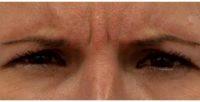
25 Year Old Woman Treated With Botox For Brow Lines By Dr. Karol A. Gutowski, MD, FACS, Chicago Plastic Surgeon
Experience and training is key to avoid Botox side effects
Botox has a better safety record than aspirin so it is very safe. To avoid the potential side effect of droopy eyelids make sure your practitioner is well trained and experienced in the use of Botox.
He/she should have performed hundreds (preferably thousands) of injections. Ask what training your practitioner has undergone and how often he/she updates their training with Allergan sponsored seminars. (Harold J. Kaplan, MD, Los Angeles Facial Plastic Surgeon)
Avoid massaging after Botox or Dysport injection
Ideally, Botox injections should be performed by a board-certified dermatologist or plastic surgeon. Besides the precision and experience of your physician injector, you should refrain massage the skin areas after Botox or Dysport injection for the rest of the day to minimize migration.

32 Year Old Woman Treated With Botox By Doctor Timothy Mountcastle, MD, Ashburn Plastic Surgeon 985
Inadvertent or unintentional massage of forehead area after Botox or Dysport can lead to droopy eyelids or ptosis. In the event of droopy eyelids after Botox or Dysport, be reassured that it usually self-resolves in 3 to 6 weeks and application of Vysine eyedrops under supervision of a physician may facilitate resolution of droopy eyelids. (William Ting, MD, Bay Area Dermatologic Surgeon)
Avoiding side effects of botox.
Here are some pointers for avoiding side effects of botox:
- Make sure you choose a suitably trained aesthetic practitioner for the procedure. Experience is very important and will in itself reduce your risk of side effects.
- Step wise / less is more approach to the procedure. You can always add a touch more but you cannot undo the results! (of course until it wears off). This will ensure natural looking results / and reduce the risk of an ‘over botoxed’ appearance
- Follow the aftercare given by your practitioner who should provide you with suitable information such as avoiding excess exercise for 48 hours, not rubbing the area or using make-up directly after injections…(Rupert Critchley, MD, MRCGP, London Physician)
Pay attention to the injection site!
Botox is absolutely safe and, fortunately, is only temporary (meaning you don’t need to fret over a long-term commitment.) The droopy-eyelid effect you are describing most often occurs when using Botox to treat the forehead muscles or the area between the eyes.
One way to reduce the chance of this side-effect occurring is to avoid injecting directly above the brow area during your initial treatment and then, during a follow-up visit, determine if you can benefit from more Botox in this area.
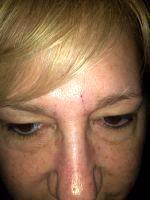
Botox Scar Tissue
Remember, each patient responds differently to Botox, so you’ll need to have a consultation to understand what your specific needs are. (Stephen P. Bracci, MD, New York Physician)
A good injector has an understanding of facial anatomy and takes precautions to avoid both eyelid ptosis and heavy brow (brow ptosis). Eyelid ptosis is rare and happens when botox travels into what’s called the levator palpebrae muscle.
On the other hand, a brow ptosis can occur from migration of Botox into the lower portion frontalis muscle. In our clinic, we take all the precautions by collecting a thorough patient history, using meticulous technique, and lastly educate our patients on post care, such as avoiding massaging the treatment areas. (Michael Tomcik, MD, San Ramon Dermatologist)
Minimal downtime and side effects of Botox

Botox To Forehead By Dr Grant Stevens, MD, Los Angeles Plastic Surgeon
One key advantage of Botox over many other cosmetic procedures is the minimal downtime. Side effects of Botox fall under two categories; those related to Botox and those related to the injection itself.
Regarding Botox – A good medical aesthetic practitioner will be able to assess your needs with regards to dosing to achieve your desired result. A detailed understanding of the anatomy will ensure you achieve the best result and rest unwanted effects.
The side effect that most people worry about it ptosis (droopy eyelid). Injecting the right amount of Botox in the right places will avoid this side effect.
regarding the injection – Most people experience a short-lived red dot on the skin at the site of the injection. To minimize the risk of bruising the key advice is to avoid your daily workout, or alcohol on the day of treatment or blood-thinning products such as aspirin, for a few days before treatment.

Bruising After Botox Injections
For high risk patients, such as people on warfarin, consider pre-treating the area with ice. As always, the best advice is to seek a highly qualified and dedicated aesthetic medical practitioner who can guide you towards the most appropriate options and results for you. (Tracy Mountford, MBBS, London Physician)
Botox is a purified protein used to address wrinkles associated with facial expression. Anxiety is very common especially the first time a person has an injectable treatment.
With any injection there is a risk for pain, bleeding, bruising, infection, redness, swelling, and tenderness. In our office we take special precautions to minimize the risks for such side effects by cleaning the area with alcohol and using a painless injection technique.
There is the very rare risk of droopy eyelids, which is temporary and can be treated with eyedrops. It is most important to find a competent provider. Look for experience, before and after photographs, and testimonials.
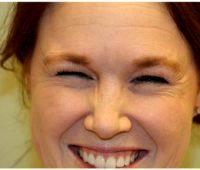
41 Year Old Woman Treated With Botox By Dr. Eric T. Waterman, MD, FACS, Seattle Facial Plastic Surgeon
Please consult with a doctor for specific recommendations. (Alex Eshaghian, MD, PhD, Encino Physician)
Find an injector with a lot of experience. Botox injections are frequently recognized at national meetings as one of the safest asthetic procedures available. A thorough knowledge of facial anatomy and expert training are essential.
Even the most advanced injector will occasionally, it should be rarely, have a problem to occur. Fortunately with Botox it will only be temporary, as the Botox effect will dissipate over a few weeks. Many can be quickly and easily rectified by additional small doses of Botox in the appropriate places. (Maurice M. Vick, Jr., MD, Baton Rouge Urologist)
Really the best thing you can do is see a qualified injector. At our practice only the surgeons inject. The way I see it we are the ones that people are going to associate with the procedure so I want to be the one to perform it.
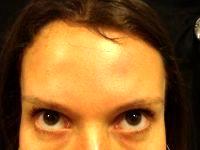
Botox Injectables Are Everywhere These Days
Things that increase the risks of a droopy eyelid are previous eyelid surgery, injection site and dilution amount. (Benjamin Caughlin, MD, Chicago Facial Plastic Surgeon)
As with any medical procedure, there are unwanted side effects. In regards to the droopy eyelid, this can almost always be prevented with an appropriate anatomic analysis of the patient. My approach for each patient is different, because each patient’s anatomy is different.
I think plastic surgeons are uniquely suited to provide good Botox outcomes, because we see the facial anatomy every day in our surgeries. This allows us to provide tailored, unique treatments that minimize unwanted side effects such as an eyelid droop. (Nirmal Nathan, MD, Plantation Plastic Surgeon)
Injector experience is key
The easiest way to avoid Botox side effects is to seek treatment by a board-certified physician who is well-trained in facial aesthetic procedures and highly experienced with facial injectables. While there are always risks to any procedure, including injection of Botox, these risks can be minimized through certain techniques, which are only learned through training and experience.
Side effects from Botox are uncommon, but as always, consult with a well-trained and experienced physician to review the risks and benefits of any procedure. (Matthew Richardson, MD, Frisco Facial Plastic Surgeon)
Going to an experienced physician that understands facial anatomy is your best decision. Ask about your injector. Make sure you are going to a medical facility that is monitoring your medical history and any allergies and has reviewed your situation to make sure you do not have any medical issues that would prevent you from having Botox. (Jack Peterson, MD, Topeka Plastic Surgeon)
Botox: Always go to a Board Certified Physician
In many places, botox is poorly regulated and not done by properly trained medical professionals in an appropriated doctor’s office environment.
Many injectors improperly dilute botox, use expired product, violate sterile technique, or improperly place botox due to a lack of training and understanding the complicated anatomy of the face.
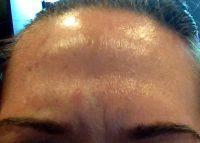
Redness At The Injection Site
Always go to a Board Certified Plastic Surgeon, Dermatologist, or Facial Plastic Surgeon which extensive experience in Botox injections. (John L. Burns Jr., MD, Dallas Plastic Surgeon)
What you can do to minimize Botox side effects
There are several things that can be done to maximize your experience with Botox. One thing is to avoid aspirin and NSAIDs before and to lessen the chance of bruising. When Botox is used it blocks certain muscles then counter affecting muscles will take over to some degree.
There is a fine balance in blocking a muscle and not having too much activity of the counter muscle. Having an experienced practitioner perform the injections is very important. Following your injections you will be given instructions about staying upright for 4-6 hours and avoiding exercise for 24 hours.
If something is not quite right after a week it is wise to contact the office. Sometimes only a minor adjustment is needed to get the correct look. (Robert W. Sheffield, MD, Santa Barbara Plastic Surgeon)
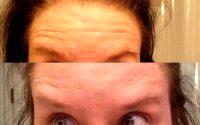
Botox For Forehead A.k.a. Botulinum Toxin Injections
Many of the side effects like droopy eyelids or crossed eyes relating to injection have more to do with the person injecting and the location of the injections rather than anything specific to do with the patient.
If you are on blood thinners and can stop them, I would avoid them so as to minimize risk of bruising. Arnica can also sometimes help with this. Afterwards, icing can help reduce swelling and bruising.
Otherwise, making sure to seek an experienced injector with knowledge of facial anatomy would be important. (Mahsa Sohrab, MD, New Haven Oculoplastic Surgeon)
